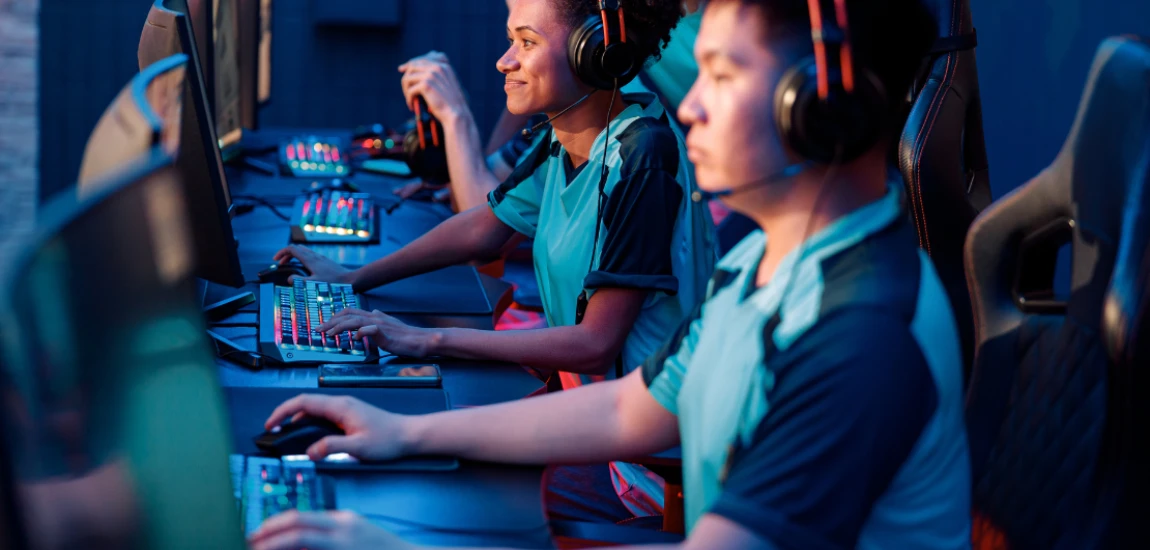Narrative-Driven Games vs. Competitive Gaming: What Do Players Prefer?

The gaming industry has grown beyond a niche hobby into a global cultural force with more than 3 billion players worldwide. One of the most fascinating debates shaping the industry today revolves around narrative-driven games vs. competitive gaming. While narrative titles invite players into immersive, story-rich worlds, competitive games offer adrenaline-fueled battles where victory depends on skill and strategy.
Why It Matters
This debate isn’t just about personal preference—it reflects broader shifts in entertainment, psychology, and community culture. Game developers, marketers, and even streaming platforms closely track these trends to meet player expectations.
What This Blog Covers
We’ll explore the appeal, psychology, strengths, weaknesses, and future of both styles of gaming, ultimately answering the question: What do players truly prefer?
The Immersive World of Narrative-Driven Games

Narrative-driven games captivate players by prioritizing storytelling, emotional depth, and character development.
Storytelling as the Core Experience
Games like The Last of Us, Red Dead Redemption 2, and Disco Elysium draw players in with cinematic narratives rivaling Hollywood films. Unlike competitive games, the reward comes not from winning but from emotional connection and immersion.
Escapism and Emotional Impact
For many players, narrative-driven games are therapeutic. They provide a safe space for emotional exploration, decision-making, and moral dilemmas. This makes them especially appealing for players who value self-reflection and empathy in gaming.
Examples of Success
Franchises such as Mass Effect or Life is Strange prove that well-written narratives can build cult followings and long-lasting fandoms.
The Competitive Rush: Why Players Choose Esports and Ranked Play

Competitive gaming thrives on challenge, adrenaline, and mastery.
The Thrill of Victory
Titles like Valorant, League of Legends, and Fortnite are built around the satisfaction of winning and constantly improving. Unlike narrative games, the replay value is nearly infinite.
Esports and Community Culture
Esports has transformed competitive gaming into a billion-dollar industry, with tournaments attracting millions of viewers globally. Players are not just gamers—they are athletes, streamers, and community builders.
The Psychological Rush of Competition
Winning releases dopamine, creating a natural high. This cycle of challenge and reward fuels long-term engagement, explaining why competitive gamers often log hundreds of hours.
Player Psychology: Why Some Prefer Stories and Others Competition

Preferences between narrative-driven games vs. competitive gaming often boil down to psychology, personality, and lifestyle.
Personality Traits and Motivation
Narrative-driven players tend to score higher in openness and empathy.
Competitive gamers often lean toward extraversion and dominance, thriving on measurable achievement.
Time and Lifestyle Considerations
Casual players may prefer competitive games for short sessions, while players with more free time might immerse themselves in 40+ hour narrative epics.
Age and Generational Differences
Younger players often gravitate toward social, competitive titles, while older audiences may prefer slower-paced, story-rich experiences.
Strengths and Weaknesses of Narrative-Driven Games

No genre is perfect—narrative-driven games have unique strengths but also drawbacks.
Strengths
Deep immersion that rivals books and movies.
Emotional storytelling leading to long-term impact.
Branching narratives with player choices shaping outcomes.
Weaknesses
Limited replayability once the story ends.
Fewer opportunities for social or team-based play.
High development costs for writing, voice acting, and cinematics.
Notable Examples
Games like Detroit: Become Human show both the highs (player agency) and challenges (complex design demands) of narrative-driven formats.
Strengths and Weaknesses of Competitive Gaming

Competitive titles have their own balance of advantages and limitations.
Strengths
Endless replay value thanks to dynamic player-versus-player action.
Community engagement through clans, guilds, and tournaments.
Career opportunities in streaming and esports.
Weaknesses
Toxic player behavior and ranked pressure.
Little focus on story or emotional connection.
Constant updates required to balance gameplay.
Cultural Impact
Games like Counter-Strike 2 and Overwatch 2 demonstrate how competitive formats dominate mainstream gaming conversations.
Community Dynamics: Story Fans vs. Competitive Players

Gaming is never just about the player—it’s also about the community.
Narrative Game Communities
Fans gather on forums, Reddit threads, and Discord servers to analyze storylines, share theories, and create fan fiction. The social aspect comes through shared emotional journeys rather than direct interaction.
Competitive Game Communities
Competitive players connect through voice chat, esports fandoms, and Twitch streams. Friendships and rivalries are built around skill progression and shared goals.
Overlap Between Communities
Interestingly, streaming platforms unite both audiences. Narrative playthroughs attract fans seeking the story, while competitive tournaments draw crowds craving fast-paced action.
The Future of Gaming: Blending Narrative and Competition

The future of gaming may not be about choosing one side but merging both.
Hybrid Game Designs
Games like Destiny 2 and Apex Legends fuse storytelling with competitive mechanics, appealing to both player types.
Role of AI and Emerging Technology
AI-driven narratives, procedural storytelling, and adaptive gameplay promise to make future games more personalized than ever before.
What Players Can Expect
The next generation of gaming will likely allow players to shift seamlessly between narrative-rich experiences and competitive challenges, depending on mood and preference.




